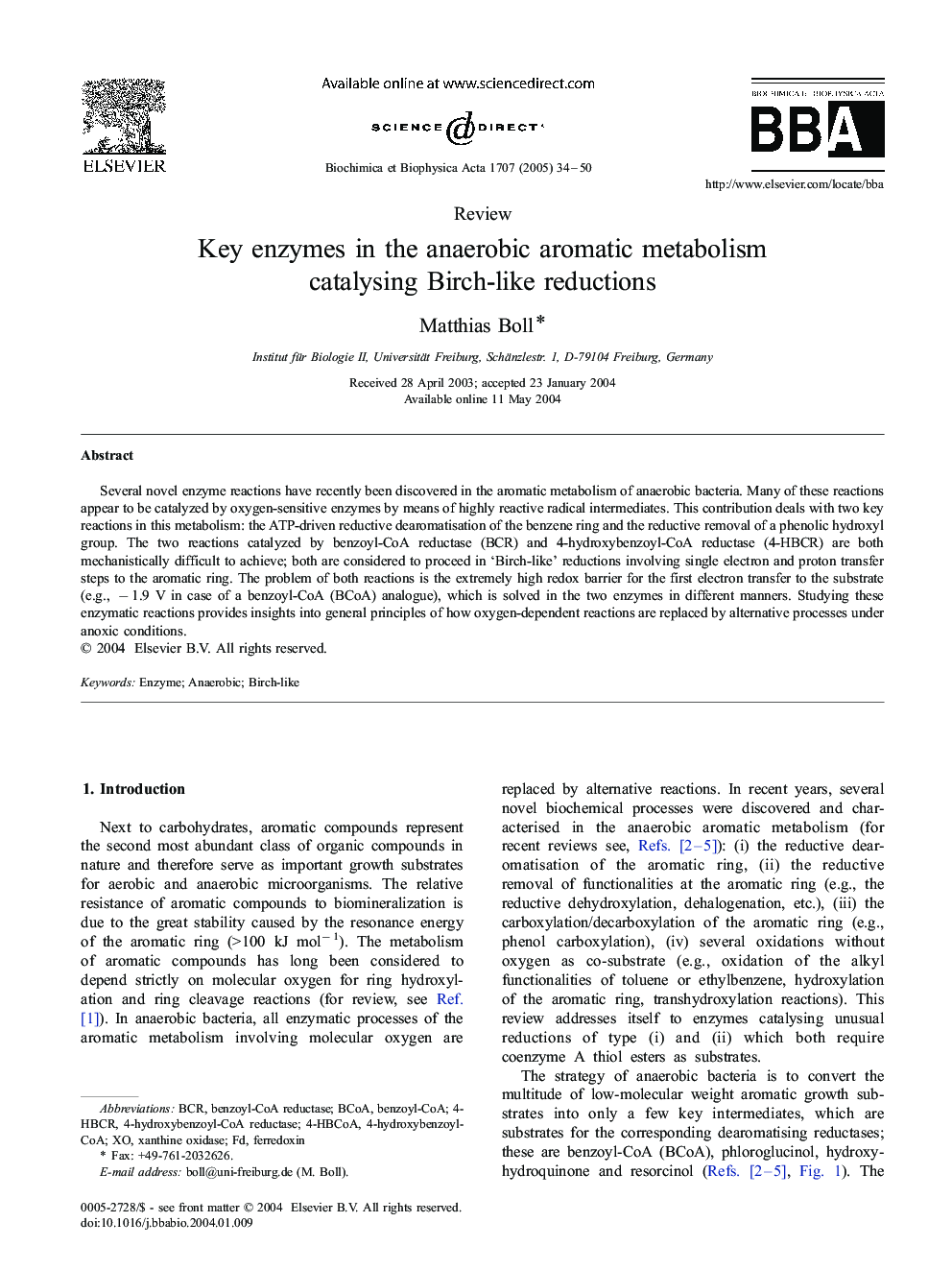| Article ID | Journal | Published Year | Pages | File Type |
|---|---|---|---|---|
| 10796164 | Biochimica et Biophysica Acta (BBA) - Bioenergetics | 2005 | 17 Pages |
Abstract
Several novel enzyme reactions have recently been discovered in the aromatic metabolism of anaerobic bacteria. Many of these reactions appear to be catalyzed by oxygen-sensitive enzymes by means of highly reactive radical intermediates. This contribution deals with two key reactions in this metabolism: the ATP-driven reductive dearomatisation of the benzene ring and the reductive removal of a phenolic hydroxyl group. The two reactions catalyzed by benzoyl-CoA reductase (BCR) and 4-hydroxybenzoyl-CoA reductase (4-HBCR) are both mechanistically difficult to achieve; both are considered to proceed in 'Birch-like' reductions involving single electron and proton transfer steps to the aromatic ring. The problem of both reactions is the extremely high redox barrier for the first electron transfer to the substrate (e.g., â1.9 V in case of a benzoyl-CoA (BCoA) analogue), which is solved in the two enzymes in different manners. Studying these enzymatic reactions provides insights into general principles of how oxygen-dependent reactions are replaced by alternative processes under anoxic conditions.
Related Topics
Life Sciences
Agricultural and Biological Sciences
Plant Science
Authors
Matthias Boll,
